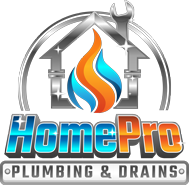The Basics of Copper Plumbing: An Overview
Copper pipes have been a staple in plumbing for many years due to their reliability and durability. They are commonly used in residential and commercial buildings for both hot and cold water supply lines. This overview will help you understand the basics of copper plumbing.
Types of Copper Pipes
Copper pipes come in various types, with red and blue copper pipes being among the most common. Red copper pipes, often referred to as Type L, are thicker and typically used for interior plumbing. Blue copper pipes, or Type M, are thinner and often used for residential water supply.
Advantages of Using Copper Pipes
Copper pipes offer several advantages. They are known for their long lifespan and resistance to corrosion, making them a reliable choice for plumbing systems. Additionally, copper pipes are resistant to bacteria, which helps maintain water quality.
Installation and Maintenance
Installing copper pipes involves cutting, fitting, and soldering the pipes together. It’s essential to follow proper installation techniques to ensure a leak-free system. Regular maintenance includes checking for leaks and corrosion, as well as flushing the system to remove any buildup.
Comparing Copper with Other Materials
Copper pipes are often compared with other materials like PEX and PVC. While PEX is flexible and easier to install, copper is more durable and has a longer lifespan. PVC is a cost-effective option but lacks the durability and heat resistance of copper.
Conclusion
Copper pipes have stood the test of time as a reliable and durable option for plumbing systems. Understanding the differences between red and blue copper pipes, their applications, and their advantages can help homeowners and professionals make informed decisions about their plumbing needs. From basic overviews and common problems to environmental impacts and DIY projects, a thorough knowledge of copper plumbing ensures the efficiency and longevity of your system.
The supporting content outlines provided, ranging from the basics of copper plumbing and common problems to sustainable practices and advanced joining methods, offer comprehensive insights into various aspects of using copper pipes. By exploring these topics, readers can gain a deeper understanding of how to select, install, maintain, and optimize copper pipes in their plumbing systems.
Whether you’re a DIY enthusiast, a professional plumber, or someone interested in the sustainability of your home, these guides provide valuable information to help you navigate the world of copper plumbing. The interlinked content ensures a well-rounded perspective, making it easier to understand and implement the best practices for using copper pipes in any setting.

